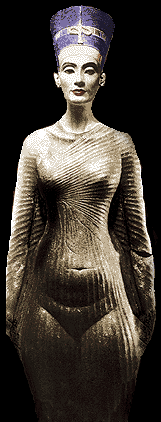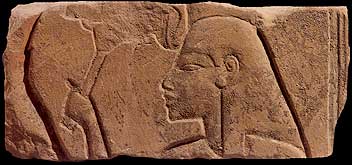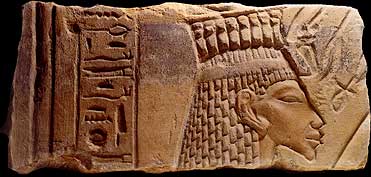|
|
|
|

|
Who was Nefertiti? Despite being one of the more famous members of ancient Egyptian history, very little is known about her origins: She may have been a Mitannian Princess, Tadukhepa, a late addition to the harem of Amenhotep III ( a theory now largely abandoned) She did not carry the titles of "King's daughter" or "King's sister" which indicates that she was not of royal birth. The most favoured option for her parentage is that she (and her sister Mutnodjme) were the daughters of Ay (pharaoh following Tutankhamun, and brother to Queen Tiye). Nefertiti was first seen very early in the reign of Akhenaten - she is frequently shown at the King's side, their first appearance together predates the early harsh Amarna art style and shows Nefertiti in a more traditional manner:  |
|
Very soon her appearance changes, blocks of the Karnak talatat shows the new style (these blocks also show that Nefertiti was far from being a passive queen in Akhenaten's world - she played a major role in the new worship of the Aten, in some scenes she is given equal status to that of the King and even taking on some of the duties that had always traditionally been reserved for the pharaoh himself - smiting/sacrificing the enemies of Egypt to the Aten.  In her book 'Nefertiti' Joyce Tyldesley draws the comparison between Nefertiti and a new fertility goddess in the Amarna Period to replace the now illegal worship of Hathor - (Nefertiti had six children and so, of course, could be considered as a replacement for the now banned Hathor).
|

